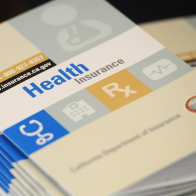 In a study that highlights the importance of sharing stories like Frugivore daily editor Arielle Loren’s piece, My HPV Reality, The Associated Press reports that over half of American female teens have not received the recommended preventative vaccination for human papilloma virus (HPV), which is the sexually-transmitted virus that cause cervical cancer and/or genital warts.
In a study that highlights the importance of sharing stories like Frugivore daily editor Arielle Loren’s piece, My HPV Reality, The Associated Press reports that over half of American female teens have not received the recommended preventative vaccination for human papilloma virus (HPV), which is the sexually-transmitted virus that cause cervical cancer and/or genital warts.
According the Centers for Disease Control and Prevention, only one-third of American teens had undergone the series of three shots that make up the full vaccination. Conversely, the CDC claims that about two-thirds of teens have received one type of bacterial meningitis and a shot for meningitis and tetanus, diphtheria, and whooping cough.
Sadly, experts say many parents are not encouraging dialogue between themselves, their kids, and health professionals because of the pervasive sexual taboos that exist in America.
[S]ome parents may misunderstand, thinking their daughters don’t need it at such a young age because they aren’t sexually active. Others may believe that it would require a discussion about sex and sexuality – a talk they may not feel ready to have, some experts said.
Vaccines, inherently, pose health risks to people, but the proposed benefits of this particular vaccine trump the risks. According to a story recently published in The New York Times, childhood vaccines have been cleared of the autism scare, which kept many parents away from vaccines recently.
Millions of Americans – women and men – become infected with HPV each year, though most show no symptoms and clear the virus on their own. But some strains persist and can cause genital warts and cancer. About 12,000 women are diagnosed with cervical cancer each year, and about 4,000 die from it, according to CDC statistics.
CDC’s Dr. Melinda Wharton is very disappointed that this vaccine has not caught on to the 90 percent and above range that is considered successful for a childhood vaccine:
“If we don’t do a much better job, we’re leaving another generation vulnerable to cervical cancer later in life.”
The study was published online in a CDC publication, Morbidity and Mortality Weekly Report.






